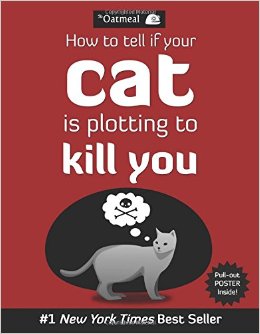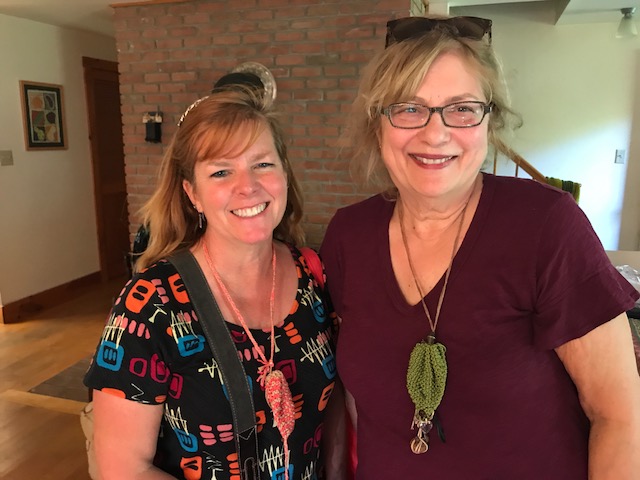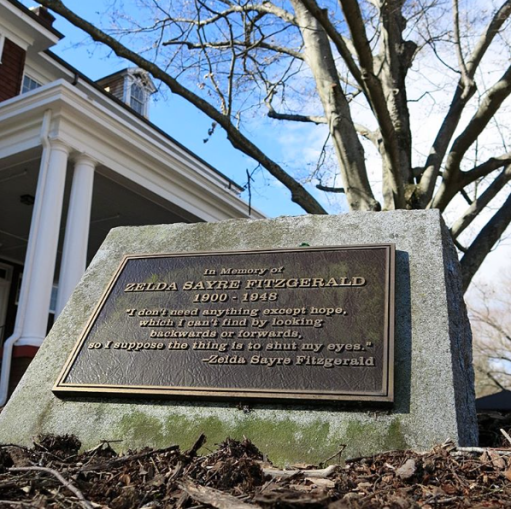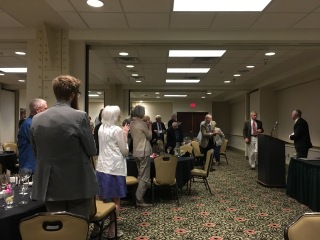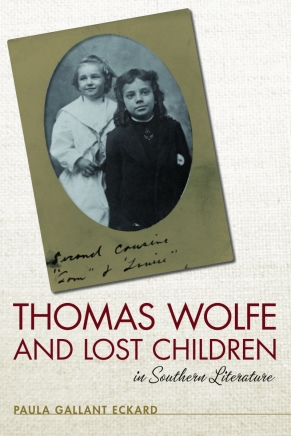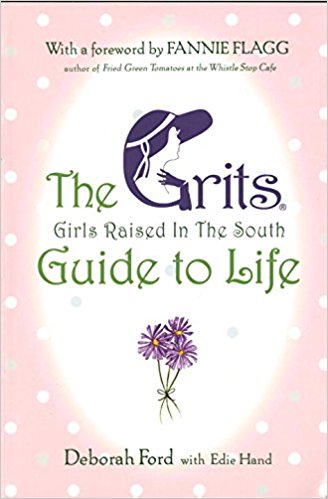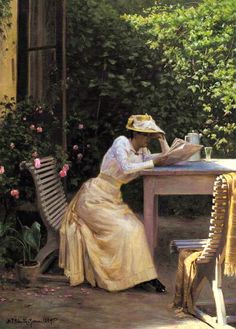For many years, I have been intrigued by the designations troubadour and storyteller. There is a very long tradition of both throughout history. What’s the difference? The word troubadour is from the French and was used to refer to medieval lyric poets, often concentrating on the theme of courtly love, with verses written to music. A poet musician is how I think of it. In more modern times, troubadours have been folk singers in particular.
Scheherazade spins tales about Aladdin, Ali Baba, and Sinbad the Sailor over One Thousand and One Nights, enthralling her murderous husband King Shahryar, who postpones her execution night after night in order to hear another story. Stories are that powerful.

Storytelling goes much further back, when histories were passed down in the oral tradition rather than the written. Oral storytelling remains central in some cultures today.


The storyteller figures above were made by Cochiti Pueblo potter Helen Cordero (1915-1994), who based some of her work on the “singing mother” motif and others on memories of her grandfather. Her figures are storytellers and she herself became a storyteller through their creation.
Storytelling clearly doesn’t have to involve words, as seen by Helen Cordero’s work. Images tell wonderful stories. Think of ancient cave paintings, some over 35,000 years old. In the January 2016 issue of Smithsonian, Jo Marchant and Justin Mott explored the cave paintings on the island of Sulawesi, Indonesia, thought to be the oldest cave paintings thus far discovered.

Scattered on the walls are stencils, human hands outlined against a background of red paint. Though faded, they are stark and evocative, a thrilling message from the distant past. My companion, Maxime Aubert, directs me to a narrow semicircular alcove, like the apse of a cathedral, and I crane my neck to a spot near the ceiling a few feet above my head. Just visible on darkened grayish rock is a seemingly abstract pattern of red lines.
Then my eyes focus and the lines coalesce into a figure, an animal with a large, bulbous body, stick legs and a diminutive head: a babirusa, or pig-deer, once common in these valleys. Aubert points out its neatly sketched features in admiration. “Look, there’s a line to represent the ground,” he says. “There are no tusks—it’s female. And there’s a curly tail at the back.”
Humans making figurative art, using imagination and symbolism–truly a remarkable development. Previous to the discovery of the paintings on Sulawesi, the oldest cave paintings were thought to be the famous Chauvet Cave paintings in France, made a World Heritage site in 2014. You can see an online exhibition of them through the Bradshaw Foundation.

I come to write about this through my love of singer/songwriters. Preferably menlacholy ones. Or romantic. Or romantically melancholy. As I have written about before, I have really weird and vivid dreams. Last week, I had several dreams in which Canadian singer/songwriter Gordon Lightfoot (as a young man, not the close to 80-year old he is now) was wandering through the action, playing his guitar and singing.
As I have also written, I am highly susceptible to ear worms. So for days now, Lightfoot’s song “If You Could Read My Mind” has been on an endless loop in my head. The song is about the breakup of his first marriage. Hauntingly beautiful but unbearably sad.
Sigh. Of course, there are many wonderful examples of troubadours: Pete Seeger, Woody Guthrie, Arlo Guthrie, Bob Dylan, Leonard Cohen, David Wilcox, Kelly Joe Phelps. I heard Kelly Joe Phelps describe how when he’s performing a song, he sees it as a movie playing in his mind. Storytelling, yes indeed.
Pete Seeger (1919-2014)
Woody Guthrie (1912-1967) and his son Arlo Guthrie (b. 1947)

Bob Dylan (b. 1941)
Leonard Cohen (1934-2016)

David Wilcox (left), Kelly Joe Phelps (right)
Lest I leave out women, I’ll add Carole King, Joni Mitchell, Joan Baez, Janis Joplin, Emmylou Harris. I consider Natalie Merchant to be in this group of female troubadours and storytellers. I could go on and on.
And this is only a very narrow sampling from North American, white culture. There is such an array to choose from; the African American blues tradition, for example, with Muddy Waters, John Lee Hooker, B.B. King, Buddy Guy, Bessie Smith, Ma Rainey, Alberta Hunter…
Writers are, by nature, storytellers, but I consider some to be more in THE storyteller tradition than others. For example, Irish writer Frank Delaney (1942-2017), a novelist, journalist, and broadcaster, is best known in the United States for his book Ireland, a many-layered and rich story of storytellers. Here is the synopsis from Amazon:
In the winter of 1951, a storyteller, the last practitioner of an honored, centuries-old tradition, arrives at the home of nine-year-old Ronan O’Mara in the Irish countryside. For three wonderful evenings, the old gentleman enthralls his assembled local audience with narratives of foolish kings, fabled saints, and Ireland’s enduring accomplishments before moving on. But these nights change young Ronan forever, setting him on a years-long pursuit of the elusive, itinerant storyteller and the glorious tales that are no less than the saga of his tenacious and extraordinary isle.
It’s probably not okay to bring up now-disgraced storyteller Garrison Keillor, but for many years, before the sexual misconduct allegations, he created a wonderful world of characters and stories with his radio program and books about the fictional Lake Wobegon. There, I brought him up anyway.
One of my personal favorites is Eudora Welty, author of one of my all-time favorite short stories, Why I Live at the P.O.

Following in her footsteps and the tradition of female Southern writers is my mother’s favorite, Fannie Flagg.

Mom made a point of making sure each of her children had a copy of A Redbird Christmas, which I’ve reread over several holiday seasons, and also listened to the audiobook, read by Ms. Flagg herself.

You might be more familiar with her work from the movie Fried Green Tomatoes, based on her book Fried Green Tomatoes at the Whistle Stop Cafe.
Filmmakers are certainly storytellers, whether it is in telling a hardhitting true story through documentaries, like Michael Moore, or whimsical fictional stories along the line of Tim Burton or Wes Anderson.
There’s a novel I am going to write someday. I know what it’s about, but it’s a long way off, and will require much research on my part. (I think I’ll complete the Ph.D. first.) I already have a vision for what the film version will look like, and Wes Anderson is my first choice for director. I see something in the spirit of his The Grand Budapest Hotel. I hope your curiosity is piqued so that you will read my novel. When I write it. When it’s published. By then, I’ll be old enough for the large print edition myself.
I could go on and on, but I will end with an art exhibition here where I am now at the Saybrook University Residential Conference, being held at the Hyatt Regency Monterey. Photographer and filmmaker Randy Bacon has compiled a work entitled The Road I Call Home, featuring portraits and films of people who are homeless telling their stories. The project is presented by Gathering Friends for the Homeless in conjunction with 7 Billion Ones. I have been gazing at the portraits as I travel the conference center today, but only just started reading the stories they tell. Everyone has a story to tell, and deserves the chance to tell it. Here are a few of the portraits.
It’s late now and time for me to sleep, perchance to dream. And perhaps hear a little Gordon Lightfoot.
Sweet dreams to all.











































































